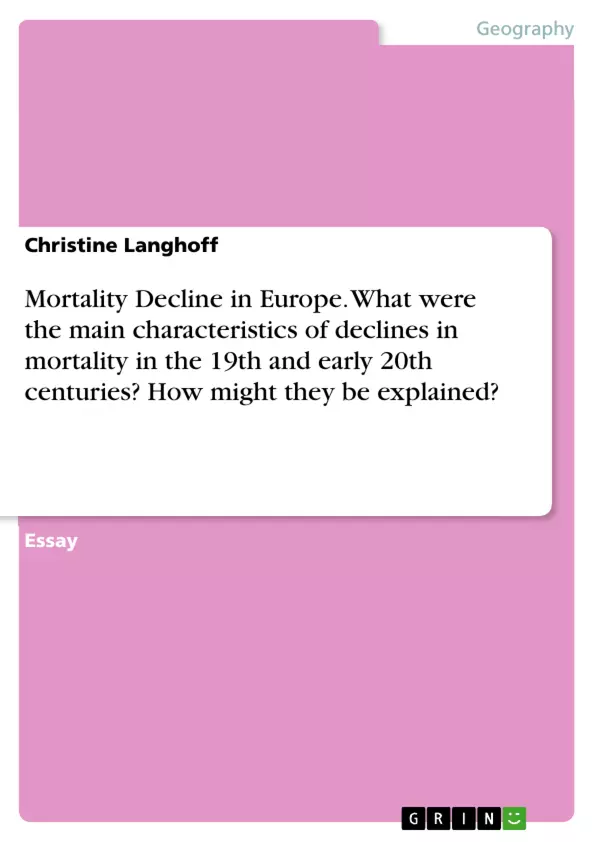The decline in European mortality which began in the seventeenth century and accelerated in the eighteenth and nineteenth centuries has two main characteristics: the decline in the crude rate of mortality (the relation between numbers of deaths and the average population in a given year) and a later decline in the rate of infant mortality (the relation between the number of infant deaths under 12 months and the number of registered live births in a given year). Many different explanations for these declines have been given. I am going to consider the McKeown thesis which concluded that improving nutrition is the best explanation for the historical fall in mortality in Britain, as well as the theory that increasing inherited resistance to infectious diseases was the major factor.
Table of Contents
- Mortality Decline in Europe
- The McKeown Thesis
- McKeown's Analysis of Death-Rates
- The Problem with McKeown's Conclusion
- The Role of Public Health Improvements
- Infant Mortality
- Theories of Infant Mortality
- The Decline in Infant Mortality
- The Role of Inherited Resistance
Objectives and Key Themes
This text examines the decline in mortality rates in Europe during the 19th and early 20th centuries. It explores the various factors that contributed to this decline, focusing on the McKeown thesis and the role of public health improvements.
- The decline in European mortality rates and its characteristics
- The McKeown thesis and its explanation for mortality decline
- The role of public health improvements in reducing mortality
- The importance of sanitation and hygiene in combating disease
- The impact of infant mortality and its contributing factors
Chapter Summaries
The text begins by outlining the two main characteristics of the decline in European mortality: a decrease in the overall mortality rate and a subsequent decline in infant mortality. The McKeown thesis is then introduced, arguing that improving nutrition is the primary factor responsible for the decline in mortality in Britain. However, this thesis is challenged by further research, which suggests that the decline was more complex and attributed to various factors, including the influence of public health improvements.
The role of public health improvements in reducing mortality is further explored, highlighting the impact of sanitation and hygiene in controlling the spread of disease. The text examines the urban growth and overcrowding of the 19th century, and how the lack of basic sanitation facilities contributed to the spread of water-borne diseases. The eventual implementation of measures such as clean water supply, vaccinations, and proper sewage systems led to a decline in adult mortality.
The chapter on infant mortality discusses various theories about its causes, including the impact of maternal employment and maternal ignorance. The text refutes these theories and presents evidence suggesting that improved public health services, including better housing, sanitation, and milk supply, were the main factors contributing to the decline in infant mortality. Furthermore, the chapter highlights the importance of promoting hygienic practices for infant feeding.
Keywords
The text focuses on key themes such as mortality decline, public health improvements, sanitation, hygiene, infant mortality, McKeown thesis, and inherited resistance to infectious diseases. These concepts are central to understanding the historical decline in European mortality and the factors that contributed to it.
- Quote paper
- BA (Oxon), Dip Psych (Open) Christine Langhoff (Author), 2003, Mortality Decline in Europe. What were the main characteristics of declines in mortality in the 19th and early 20th centuries? How might they be explained?, Munich, GRIN Verlag, https://www.grin.com/document/80249



